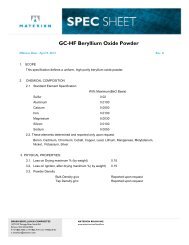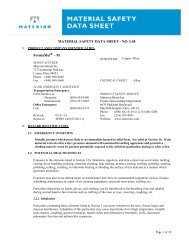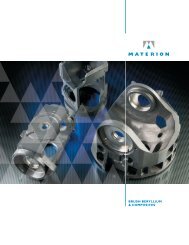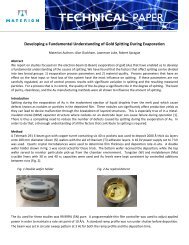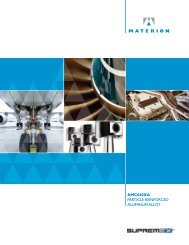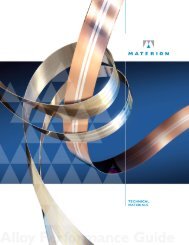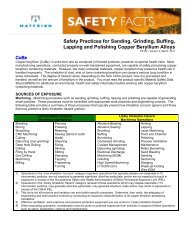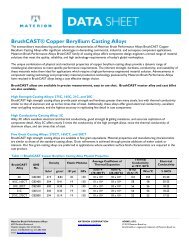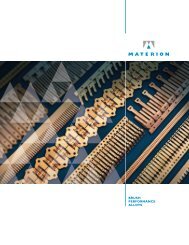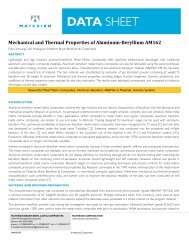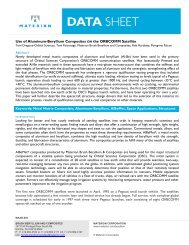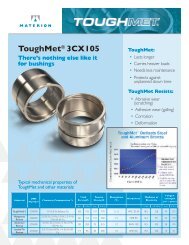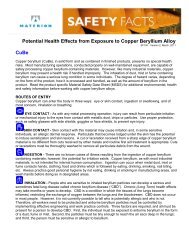A High Performance Beryllium Dome Diaphragm ... - Materion
A High Performance Beryllium Dome Diaphragm ... - Materion
A High Performance Beryllium Dome Diaphragm ... - Materion
- No tags were found...
You also want an ePaper? Increase the reach of your titles
YUMPU automatically turns print PDFs into web optimized ePapers that Google loves.
Buck, et al.<strong>High</strong> <strong>Performance</strong> <strong>Beryllium</strong> <strong>Dome</strong> <strong>Diaphragm</strong>3.7 1 st Bending Mode (relative to aluminum)For a given geometry, the frequency of the first bending mode (break-up frequency) is related tothe speed of sound in the material. More accurately, the first bending mode varies as √(E/ρ (1-ν 2 )), according to Euler-Bernoulli plate theory (Kinsler & Frey). For the sake of clarity in thetable, these results have been shown relative to the 1 st Bending Frequency of the aluminumplate.The approximate shape of the 1 st bending mode is shown in Figure 1 below.Figure 1. 2D Mode Shape at 1 st Bending Frequency of a <strong>Dome</strong> <strong>Diaphragm</strong>.3.8 SummaryIn summary, from the material properties table above, one can readily see that beryllium has thelowest mass, the highest stiffness, the lowest Poisson Effect, the highest speed of sound, and thehighest tensile strength of the acoustically useful light metals. This excellent combination ofproperties results in a much higher bending stiffness for any given geometry, and thus a markedincrease in the first bending mode frequency of the diaphragm. What this means to the designerof large format compression drivers is more than an octave of useful frequency range from thesame driver geometry.4. MANUFACTURING PROCESSES<strong>Beryllium</strong> is inherently a hard metal, and has a reputation for being brittle in thin structures.However, manufacturing processes can have significant effects on the ductility of beryllium.There are two processes that are currently used to manufacture beryllium acousticcomponents.4.1 PVD <strong>Beryllium</strong>PVD is a process performed in a vacuum and is a general term used to describe any of a varietyof methods to deposit thin films by the condensation of a vaporized form of the material ontovarious surfaces. The coating method involves purely physical processes such as hightemperature vacuum evaporation or plasma sputter bombardment. The process used to vapordeposit beryllium produces a relatively coarse grain structure with grains oriented perpendicularto the plane of the deposited layer. The PVD process also places physical limits on the thicknessof the finished diaphragm.ALMA Europe Symposium 09 April, 2011Page 4 of 26



